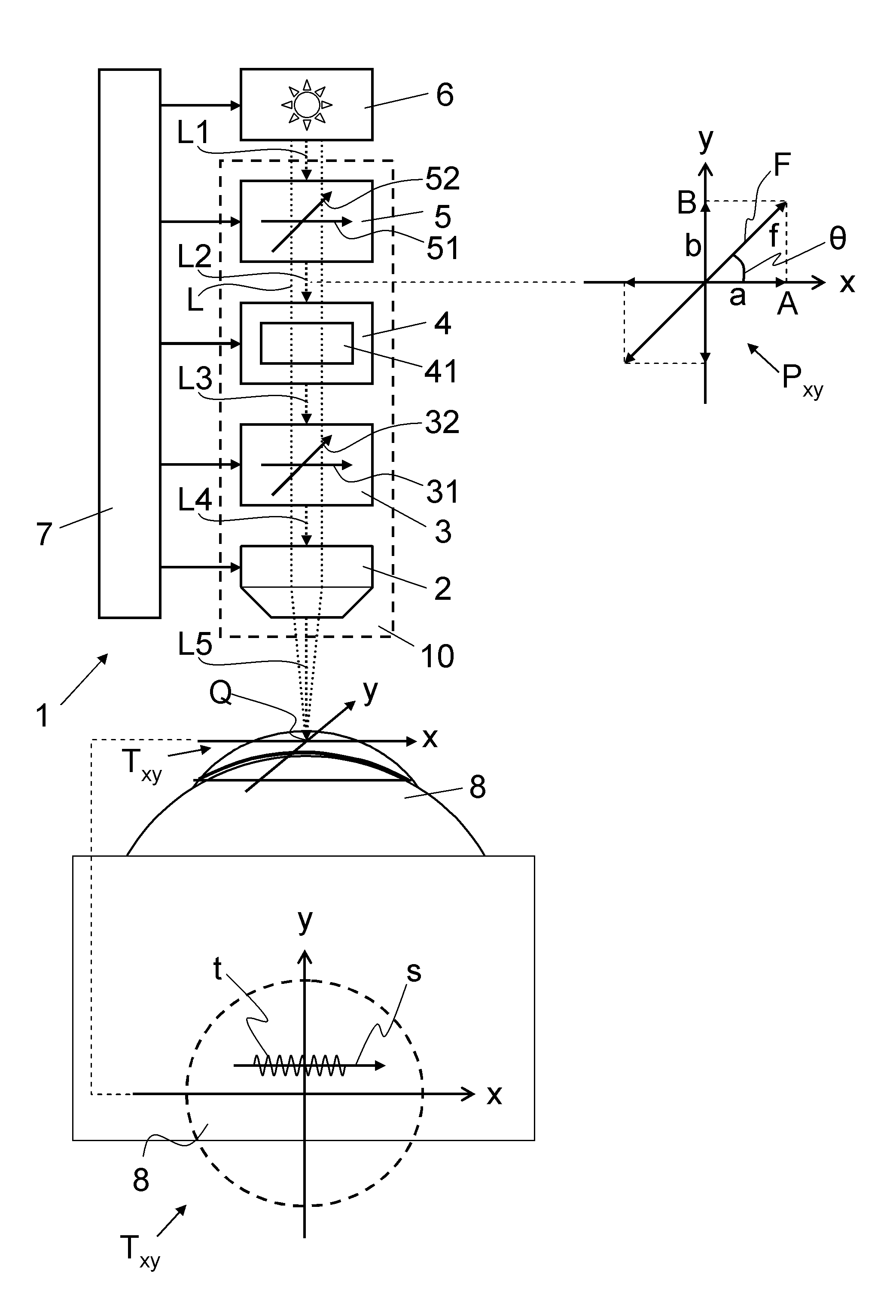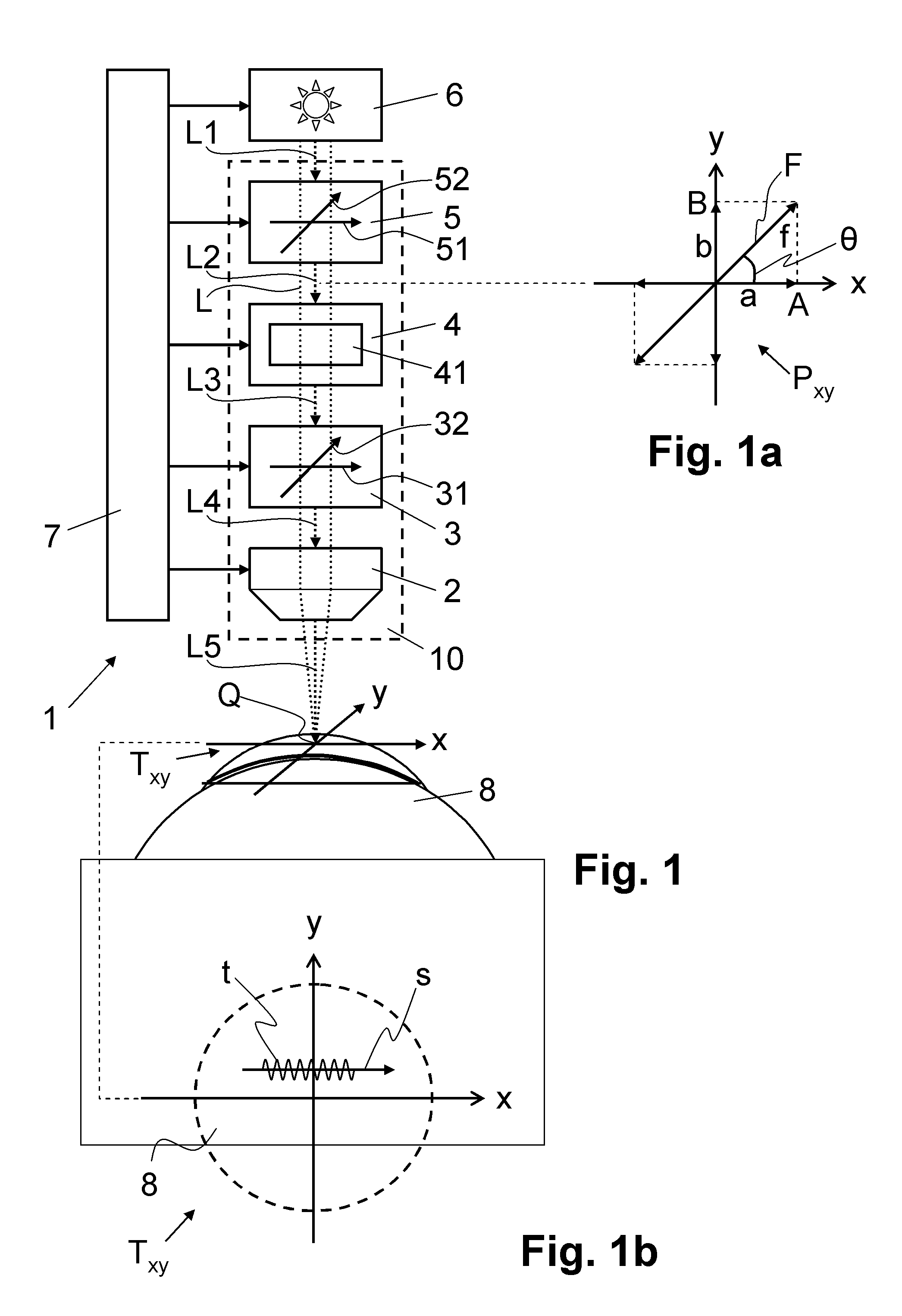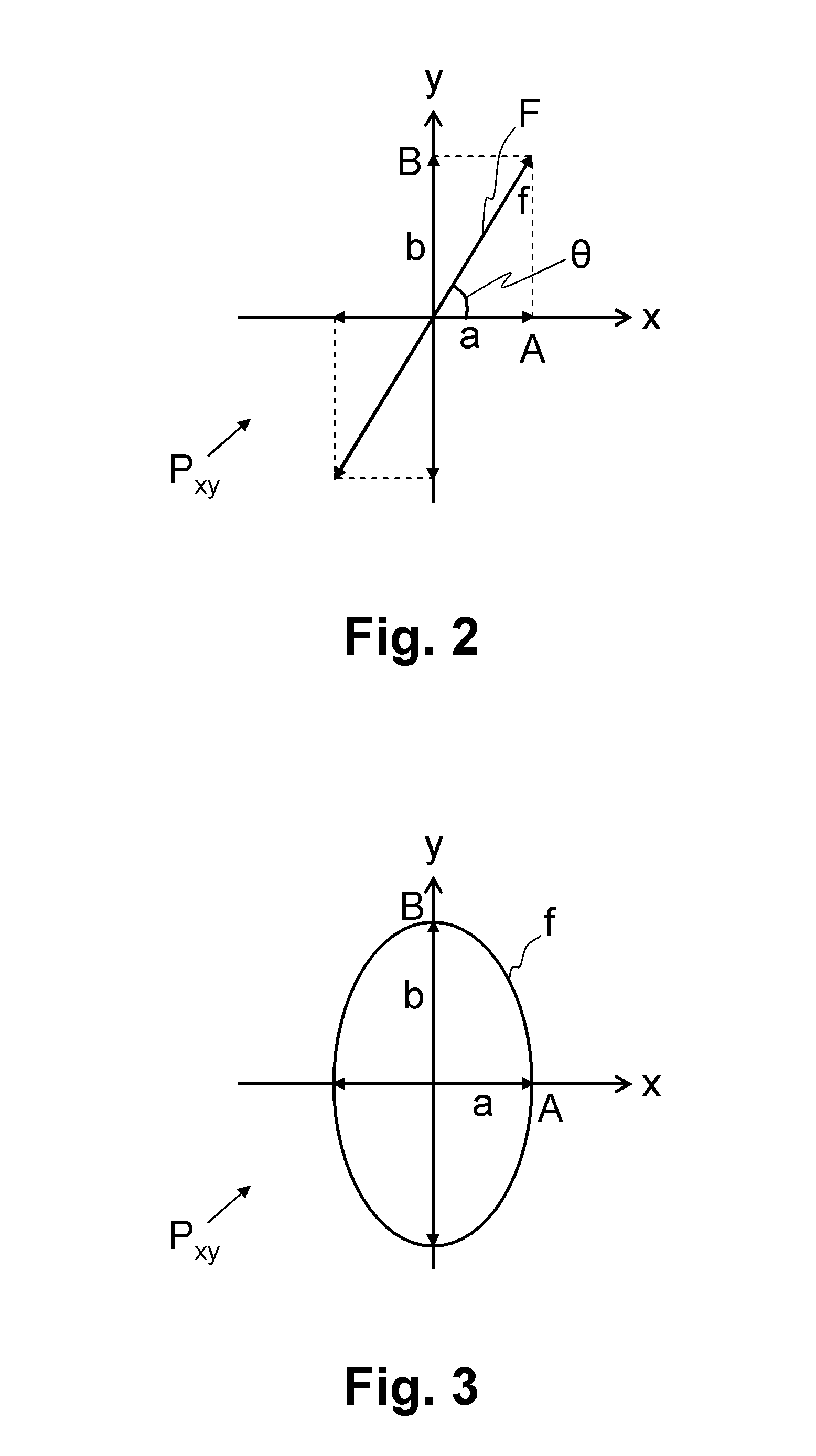Device for processing eye tissue by means of femtosecond laser pulses
a technology of eye tissue and laser pulses, applied in optics, medical science, instruments, etc., can solve the problems of laser switching off, significant limits on cut guidance implementation, and the pulse rate has to be actively reduced
- Summary
- Abstract
- Description
- Claims
- Application Information
AI Technical Summary
Benefits of technology
Problems solved by technology
Method used
Image
Examples
Embodiment Construction
[0041]In FIG. 1, the reference symbol 1 refers to an ophthalmological device for processing eye tissue 8 by means of a pulsed laser beam L1 with femtosecond laser pulses. The pulsed laser beam L1, preferably having pulse frequencies in the MHz range with more than one million pulses per second, is supplied by a beam source 6 and, in a manner focused by means of an optical transmission system 10, projected along a scanning trajectory t as a pulsed processing beam L5 onto or into the eye tissue 8. Depending on the embodiment, the beam source 6 is part of the optical transmission system 10 or configured as a separate unit connected to the optical transmission system 10 via a light transmission system, for example a fibre-optic line and / or a mirror / lens system.
[0042]As is illustrated schematically in FIG. 1, the ophthalmological device 1 or the optical transmission system 10 includes two beam-deflecting scanner systems 3, 5 and an optional filter module 4, which are arranged in the beam...
PUM
 Login to View More
Login to View More Abstract
Description
Claims
Application Information
 Login to View More
Login to View More - R&D
- Intellectual Property
- Life Sciences
- Materials
- Tech Scout
- Unparalleled Data Quality
- Higher Quality Content
- 60% Fewer Hallucinations
Browse by: Latest US Patents, China's latest patents, Technical Efficacy Thesaurus, Application Domain, Technology Topic, Popular Technical Reports.
© 2025 PatSnap. All rights reserved.Legal|Privacy policy|Modern Slavery Act Transparency Statement|Sitemap|About US| Contact US: help@patsnap.com



